How to visit Los Llanos in Venezuela

Wanna travel to Venezuela with Against the Compass?
Join us on a 2-week adventure across Canaima National Park, Los Llanos, Mérida and the Caribbean coast.
January 7th to 18th, 2026
Los Llanos is a wet ecosystem, a massive area of seasonally flooded plains that spread across Colombia and Venezuela, characterized by their extensive savannas, unique fauna, and a cowboy-like culture palpable in their local folklore and the raising of cattle.
I had the chance to visit Los Llanos for 4 days during my last trip to Venezuela, and it was very different from anything I had experienced before.
In this guide, I want to show you how to visit Los Llanos independently.

In this travel guide to Los Llanos you will find:
our recommended travel insurance for Venezuela
With its Backpacker plan, IATI Insurance is the best insurance for any kind of adventurous destination, like Venezuela.
😍 Why travel to Los Llanos in Venezuela
From Canaima National Park to the Orinoco Delta, Venezuela is packed with natural highlights, but none of them surprised me as much as Los Llanos.
Imagine walking across the wild, wet plains – alone, with a simple stick and a local guide, crossing paths with 4 and 5-meter anacondas, while literally jumping over crocodiles.
Show, not tell, check my Instagram Highlights – look for anaconda safari – at @againstthecompass, and you’ll know what I mean.
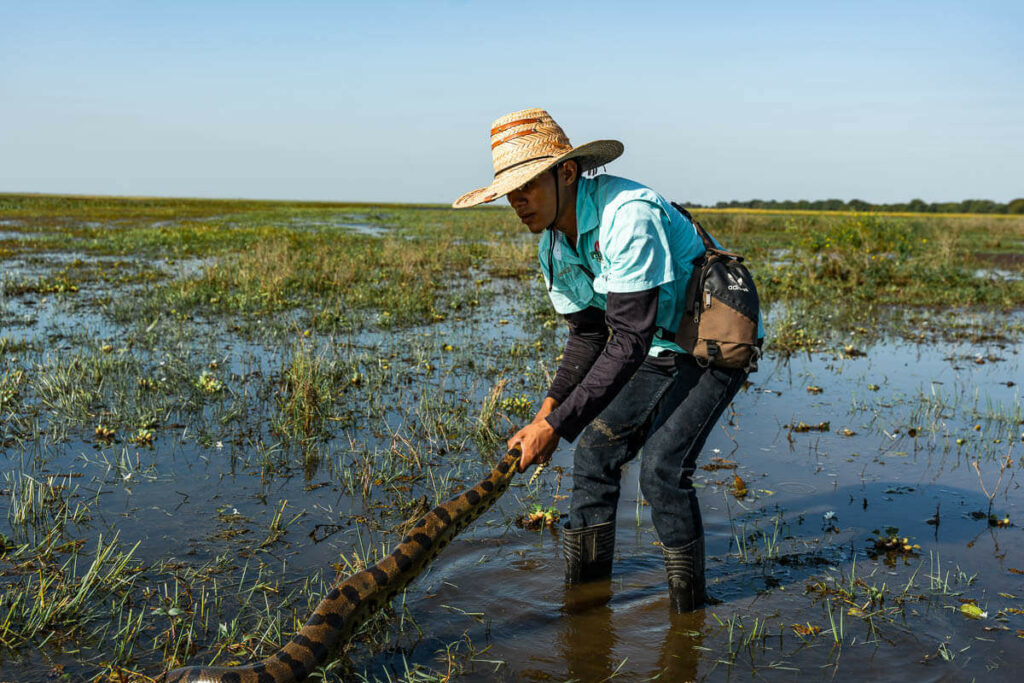
The Venezuelans from these lands – the llaneros – grew up among this fauna, they’ve been walking over the marshes since they were tiny kids, and that’s why they can offer such raw and authentic safaris, something unheard of in any other country offering experiences of this kind.
If a safari such as this was offered in any other country with mass tourism, like Tanzania or Kenya, I’m pretty sure things wouldn’t be the same, but the magic of backpacking in Venezuela is that the rules aren’t really set in stone, allowing plenty of flexibility for the most intrepid adventurers.

Los Llanos also boasts with thousands of different types of crocodiles, a massive population of capibaras – locally known as chigüires – and hundreds of bird species.
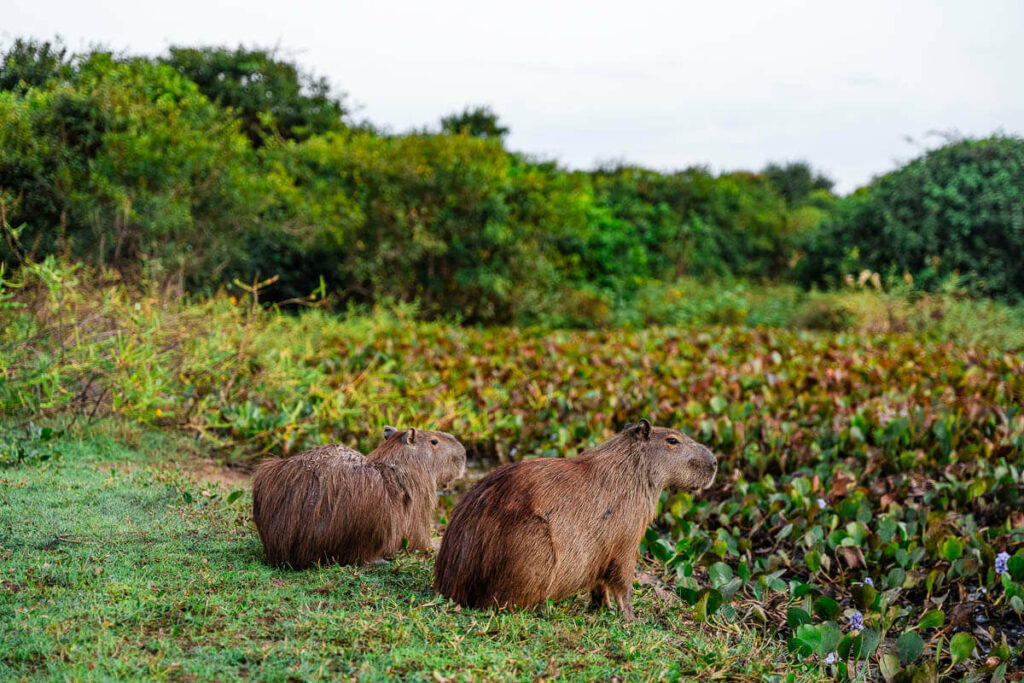
Piranha fishing is also a big thing in Los Llanos and, if you are lucky, you might also spot one of the weirdest animals in the world: a giant anteater – I was fortunate to see one pretty close up but only for 3 seconds.
Add to this their cattle-raising culture and the gorgeous flat lands, and you have one of the best places to visit in Venezuela.
By the way, the best time of year to experience the local culture and folklore is around March 19th, the day the Festival of Alorza takes place.

🗓️ How to plan your visit to Los Llanos
Visiting Los Llanos isn’t a lot different from doing a safari in Kenya.
It’s about choosing the right accommodation and spending your day searching for fauna.
To do this, the best way to experience Los Llanos is by staying at one of the several hatos found across the region.
What is a hato?
It’s like a local farmhouse, or a local ranch, usually extending for thousands of hectares and home to all the animals Los Llanos is known for.
Most hatos are exclusively used for cattle raising but a few of them have opened to tourism, offering accommodation and tours around their lands.
By the way, when you visit Los Llanos, you are likely to see many farmhouses along the road, but not all of these are hatos. Hatos typically refer to those huge ranches that cover a certain number of hectares, hence they usually belong to the wealthiest local families. The smaller farmhouses are simply called fincas.

🏨 How to find the best hato to stay in Los Llanos
When I visited Los Llanos, I stayed in two different hatos, each one offering a very different experience, and choosing the right one will depend on your objectives.
Best hato for local culture: Hato Cristero
Hato Cristero is a family-owned hato that has been run by the same family for 9 generations, founded in 1888 by a man named Humberto, a name which has been inherited by the first son of each one of those generations.
The family is extremely lovely, welcoming and accommodating.
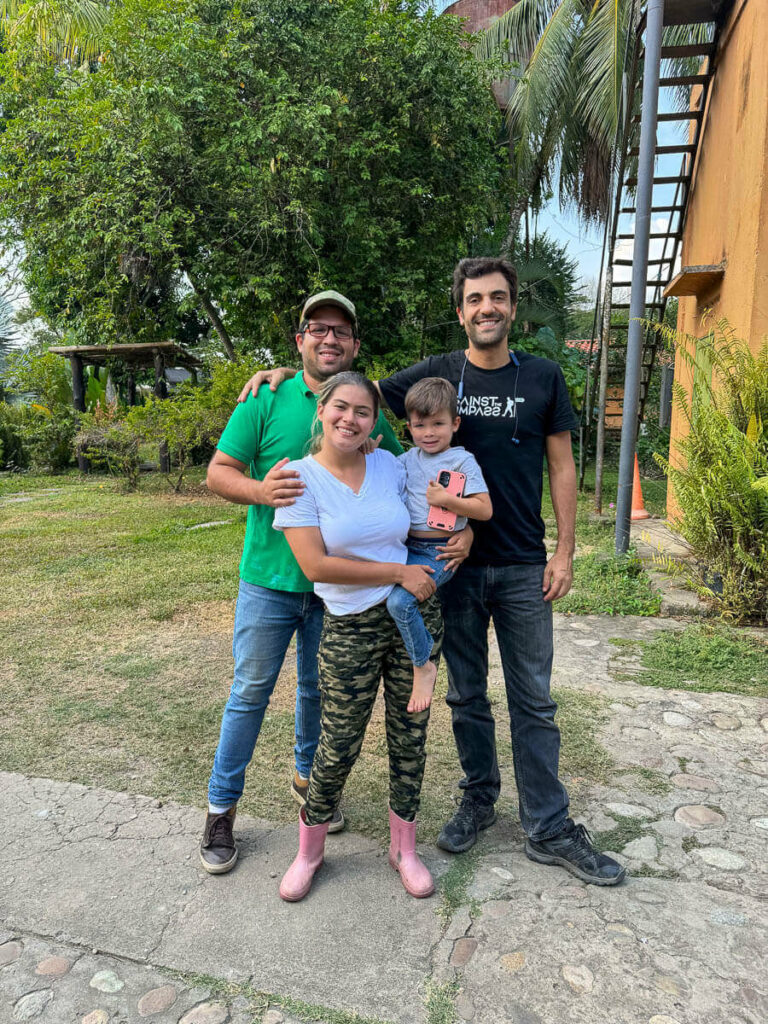

It’s important to note that you’ll be interacting with the actual family all the time. During my visit, I met the grandfather, father, daughters, sons, uncles… The whole family lives there.
Even some members from their staff have been there for decades.
For example, both the gardener and the cook have been working and living in Hato Cristero for 30 years at least.
Visiting Hato Cristero is the best way to experience the traditional regional culture.
However, there’s a downside to Hato Cristero, which is that they don’t have a lot of fauna. I mean, they do have capibaras, crocodiles, anacondas and hundreds of birds species, but it’s only a tiny fraction of what other hatos can offer.
In Hato Cristero, I did see crocodiles and capibaras but unfortunately, I didn’t spot any anacondas, while in the other hato, I saw more than 15.
Moreover, keep in mind that staying at Hato Cristero is expensive, with prices starting at around 150 USD a night although this includes all meals, tours around the hato and 5-star accommodation (it’s pretty fancy), so you get what you pay for.
You can contact them on Instagram at @hatocristero.
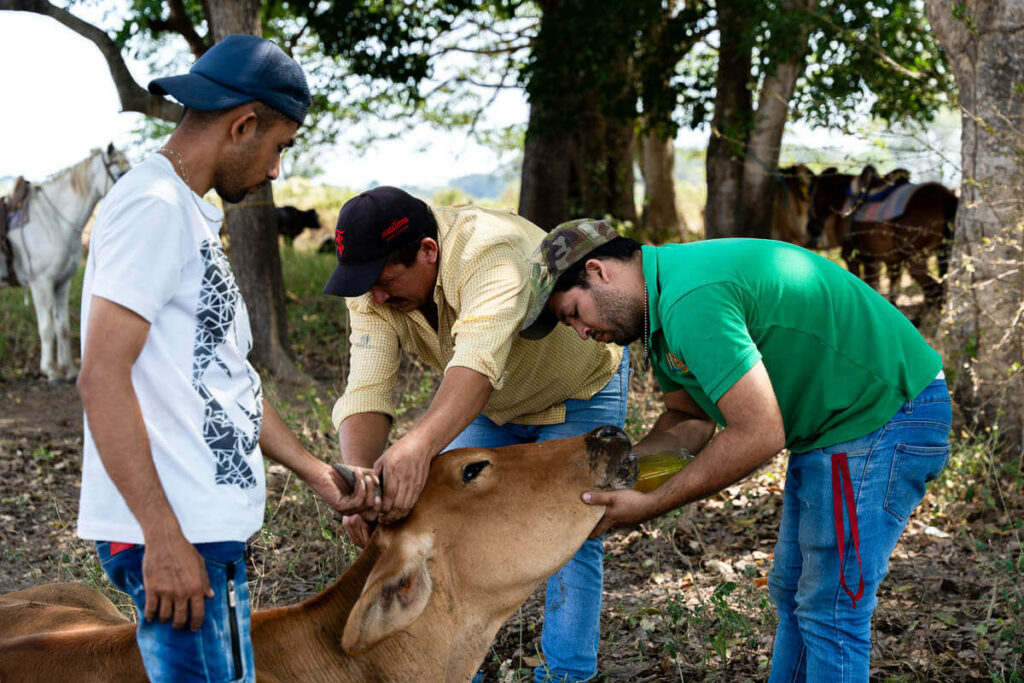
Best hato for fauna: Hato El Cedral
If your objective is just spotting fauna, don’t think twice, head to El Cedral.
Hato El Cedral is the largest hato in Los Llanos. It was opened to the public in 1987 but has been serving as a hato since the 19th century.
This hato is home to thousands and thousands of capybaras, caymans, small crocodiles, anacondas and even giant anteaters.
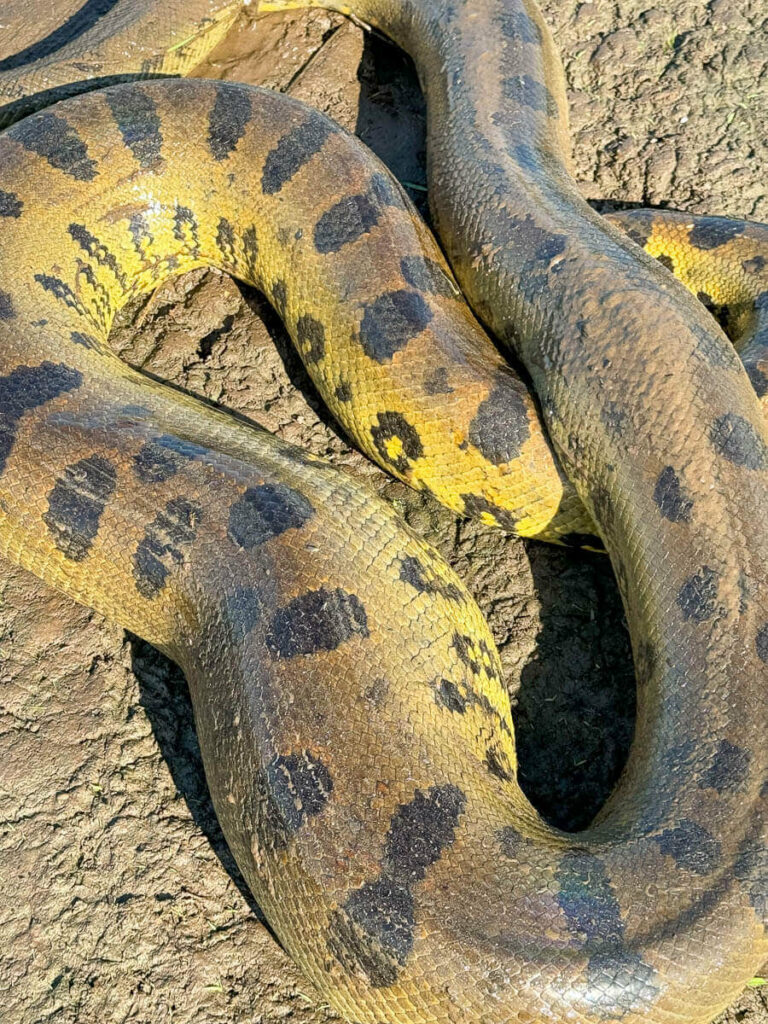

Seriously, there’s so much fauna that you’ll just get bored of crocodiles, because there are too many. At one point, I spotted over 30 at the very same location, not to mention that we bumped into loads of anacondas.
However, there is one downside to this hato, which is that it isn’t family-owned. Instead, it’s actually owned by the Government of Venezuela.
Why is it owned by the Government?
Well, Hato El Cedral was just one of the many victims of former President Chávez and his policy of expropriating over 5 million hectares across the country.
Therefore, today, everyone who works at Hato Cedral is a government employee. Don’t get me wrong though, the staff at Hato El Cedral are very friendly.
Prices start at around 70 USD a day. This includes all meals and tours as well, as at El Cristero, although the accommodation is pretty basic.
Overall, I am glad I visited Hato Cristero and got the chance to meet that family but Hato El Cedral offers a more outstanding and unique experience, since there isn’t anywhere else in the world where you can see so many anacondas and crocodiles.
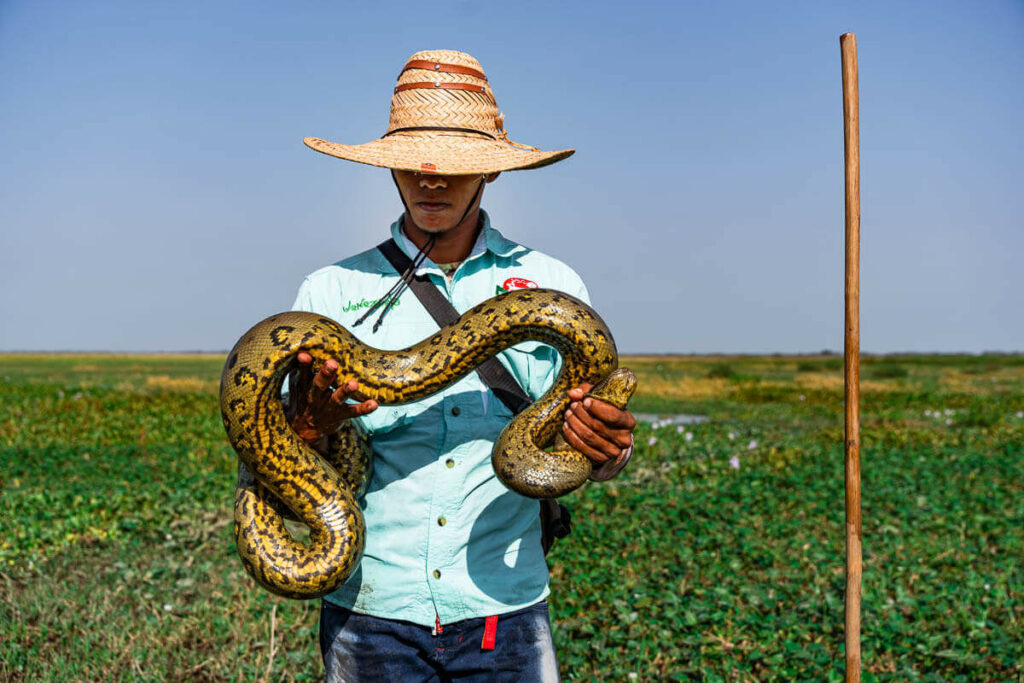
Best high-end hato for fauna: Hato Garza
This hato offers a similar experience to Hato Cedral but it’s significantly smaller and more expensive.
The tours they offer are the same but their rooms are nicer, and I assume the food is fancier.
I haven’t ever been there myself, but another traveler did recommend it to me too.
🛫 How to get to Los Llanos
Los Llanos is a pretty big area that spreads across 5 Venezuelan states, including Apure, Barinas, Portuguesa, Cojedes and Guárico.
However, Apure and Barinas are the actual heartland of the cultura llanera (culture of Los Llanos), and where you find the largest concentration of fauna.
Hato Cristero is in Barinas, while Hato Garza and El Cedral are in Apure.
Barinas City is the capital of Barinas state and the main transport hub, while San Fernando de Apure serves as the same for Apure state.
Keep in mind that both cities are far away from each other, around 430km.
How to get to Barinas
Barinas is one of the main gateways for travel to Los Llanos, especially as it’s not far from Mérida and has an airport with connections to Caracas.
How to get to Barinas from Mérida: Visiting Los Llanos before or after backpacking in Mérida is really easy. Buses run regularly between both cities, taking around 5 hours along a very twisty, winding road. Here’s the bus station in Mérida, and here’s the bus station in Barinas.
How to get to Barinas from Caracas: There are a few buses a day but remember that the bus journey can take around 10 hours. There are two bus stations in Caracas with buses departing to Barinas. The main bus station is called La Bandera; this is the main hub for buses going in that direction, mainly used by the Venezuelan working class. If you want to travel like the locals do, catch your bus here. Alternatively, in the wealthy district of Chacao, there’s a small terminal with fancy buses also departing to Barinas. Some tourists prefer catching it here because it’s supposed to be safer. It’s called Aeroexpressos Ejecutivos.
How to get to Barinas by flight from Caracas: There are a few weekly flights connecting both cities. Check flights with Conviasa or just head to the domestic terminal in Caracas. Remember that in Venezuela, flights can’t be booked online, but you must purchase them at the respective office, usually located at the airport.
How to get to Hato Cristero from Barinas City
Hato Cristero is located 30km from the city of Barinas.
As there’s no public transport, you will have to hire a taxi. Hato Cristero offers a transfer service, as well, but it will always be more expensive than hiring a random taxi.
How to get to Hato Cedral from Barinas City
Hato Cedral is located in Apure state, but it can be easily reached from Barinas, a 200km ride.
Once you’re in Barinas, you can catch one of the buses to the town of Mantecal, from where you will have to hire a private taxi to Hato Cedral.
A river divides Barinas and Apure states, and due to rain and the road conditions, sometimes buses can’t make it across. If that’s the case, you won’t find any direct bus to Mantecal, so you’ll have to go to Ciudad de Nutrias, from where you’ll have to cross the bridge on foot (or moto taxi) and then find transportation to Mantecal.
Alternatively, from Barinas, you can also find local shared taxis. In Venezuela, these are called carritos por plaza.
How to get to Apure
If you’re traveling to Los Llanos from Caracas and only intend to visit Hato Cedral, I recommend going through Apure state instead, since the road and scenery are more interesting.
How to get to San Fernando de Apure from Caracas: Buses depart from Terminal La Bandera, as mentioned in the Barinas section.
How to get to Hato El Cedral from San Fernando de Apure
You will have to take a bus to the town of Mantecal, from where you will take a taxi to El Cedral.
Los Llanos Venezolanos Map
⛅ Best time to visit Los Llanos
Los Llanos is a year-round destination, each season offering a completely different experience.
Traveling to Los Llanos during the rainy season: May to November
During the wet season, the immense plains that comprise Los Llanos are flooded and beautifully verdant.
This is the best season for bird watching, piranha fishing and boat trips across the marshes.
However, if you’re interested in anacondas – for me, that was the highlight – the chances of spotting them at this time are slim.
Visit Los Llanos during the dry season: December to April
When it stops raining, the Venezuelan marshes dry out, thus exposing a large amount of fauna that was hidden either in the water or behind the tall bushes.
This is the best season for spotting anacondas, giant anteaters and walking across Los Llanos.
The downside is that it can get really hot and dry, and it’s not as beautiful as during the wet season.
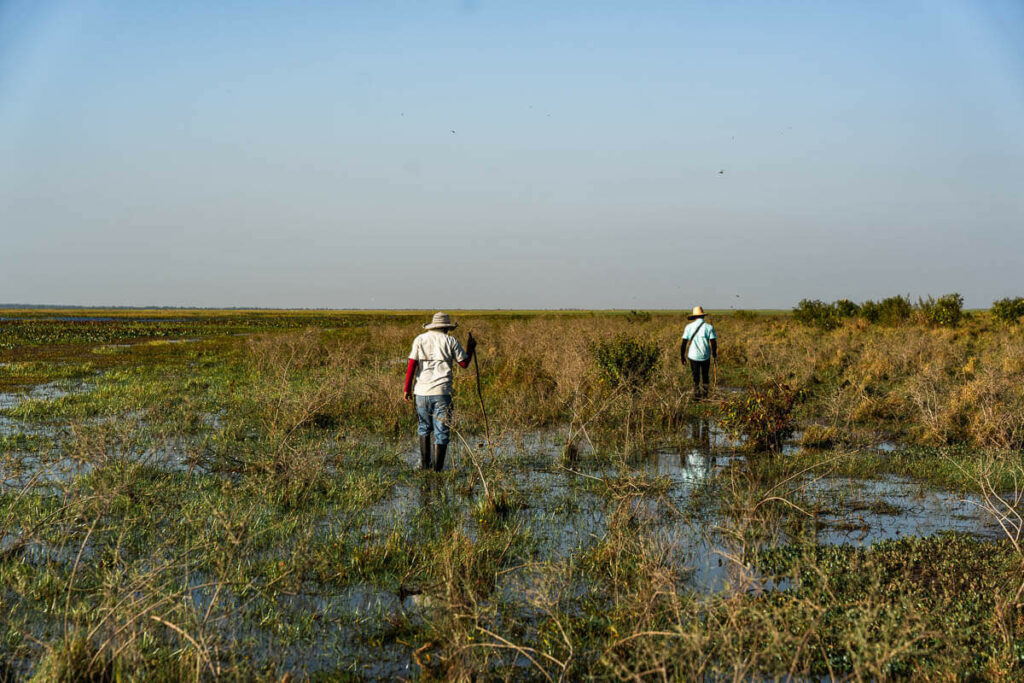
⏱️ How many days you need for visiting Los Llanos?
If you are only visiting El Cedral, which is what most foreign tourists do, here’s what I’d do:
- Day 1: Early morning, head to El Cedral from Caracas.
- Day 2: Full day in El Cedral.
- Day 3: Morning tour and departure after lunch.
Alternatively, if you wanted to combine Cristero & Cedral, this is what I did:
- Day 1: Early morning, head to Cristero from Caracas. Evening tour in Cristero.
- Day 2: Morning tour in Cristero. Departure to El Cedral after lunch.
- Day 3: Full day in El Cedral.
- Day 4: Morning tour and departure after lunch.

💸 How much does it cost to visit Los Llanos?
Similarly to visiting Canaima, accommodation in Los Llanos usually includes everything, so calculating your budget is pretty straightforward.
Local transportation from Caracas to Hato Cristero or El Cedral will cost roughly 50 USD.
Hato El Cedral costs 70 USD a night, while Hato Cristero is 150 USD a night.
These prices includes all meals, tours and accommodation. Remember that as in most of Venezuela, price is always per person, whether you share a room or not.
❗More information
📢 In my Travel Resources Page you can find the list of all the sites and services I use to book hotels, tours, travel insurance and more.
6 comments
Hi, Juan
Could you please share the contact of the guide you took, and what is the spot you went to in los llanos? Also, you stayed at Hato Cristero, correct ?
Thanks
The guide I took was just one of the guides working at Hato El Cedral, they’ll assign whoever is available on that particular day.
Hi Juan.
In your 3 day plan to Hato El Cedral, you basically spend two nights there and get access to the tours in the second day (full day) and in the third day (tour before lunch and departure after lunch). So this would be 70 * 2 =140 USD total, right ?
Hi Juan
I was travelled to south america this october and november. I did not plan to travel to venezuela originally, but this blog post which I read back in april 2024 sold me on the idea, so basically the only reason I went to venezuela was to go to Los Llanos.
I was skeptical and scared of going, but I knew it had to be done. And so I went there from the 12th to 19th of november and it was amazing. Unfortunately I only went to the Llanos and to Caracas, because I already had my flight booked prior to visiting venezuela – due to being skeptical about the country – but I have to say that it was the best out of the four i went (bolivia, peru, colombia, venezuela). Maybe I am saying this because of recency bias, but I really, really enjoyd venezuela, especially going to Hato El Cedral. This left me with a bittersweet taste because I could not explore more of the country, but I am already making plans to come back, and this time go to Angel Falls (did not go originally because I thought it was a hassle and very expensive to go to).
I am writing you this so you know that this blog post in particular was extremely helpful. Everything turned out great in my trip. It would be helpful if you could do more posts about venezuela, specially areas such as the orinoco delta, ciudad bolivar, ciudad guayana, etc
Thank you so much for your tips.
Keep up the great work!
Hi, why do you actually need to go to any hato? Wouldn’t it be cheaper to go simply to some regular farmhouses in Apure, talk to the locals and find an accomodation (or camp and trek independently) and a guide for a fraction of the price of those tourist-oriented establishments? That’s how I’ve always travelled in dozens of countries so I am curious to know, if it’s possible in Los Llanos. Thanks, Jacek
You can try and let us know